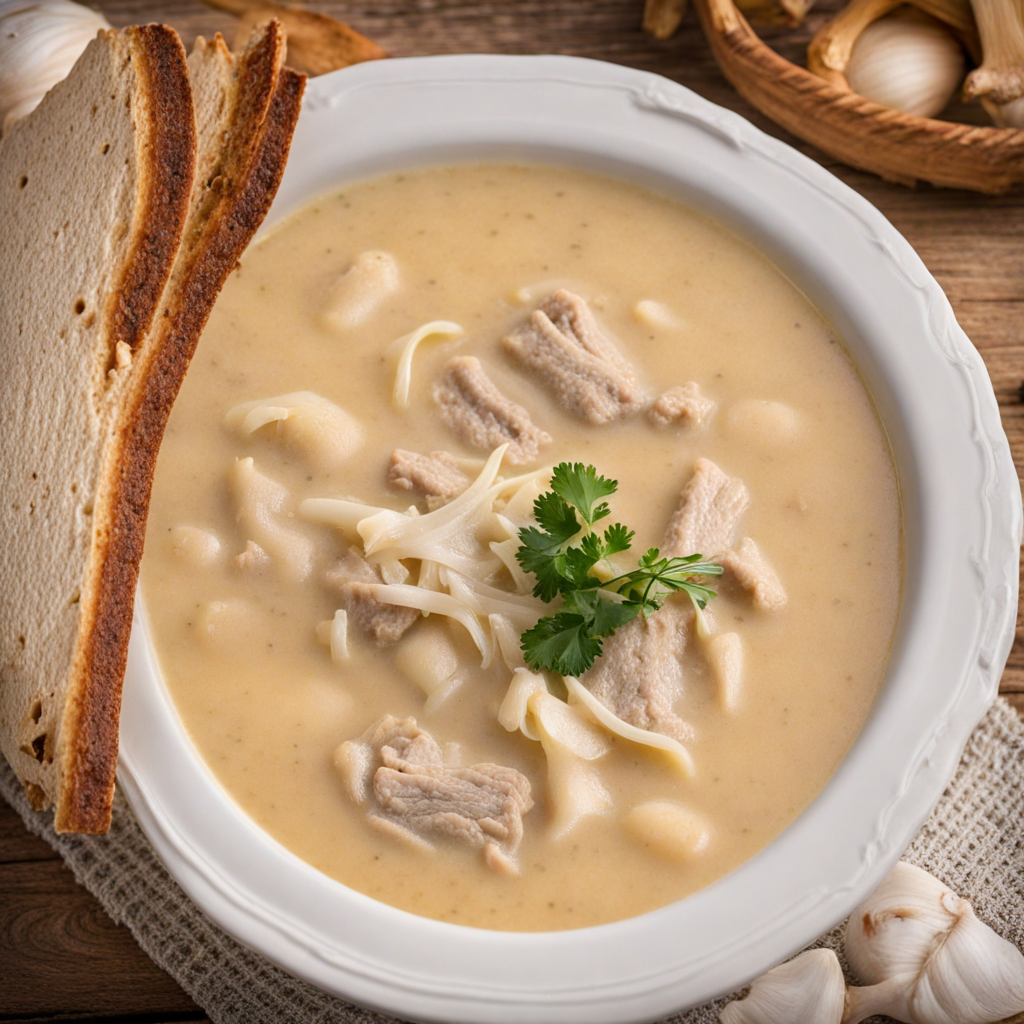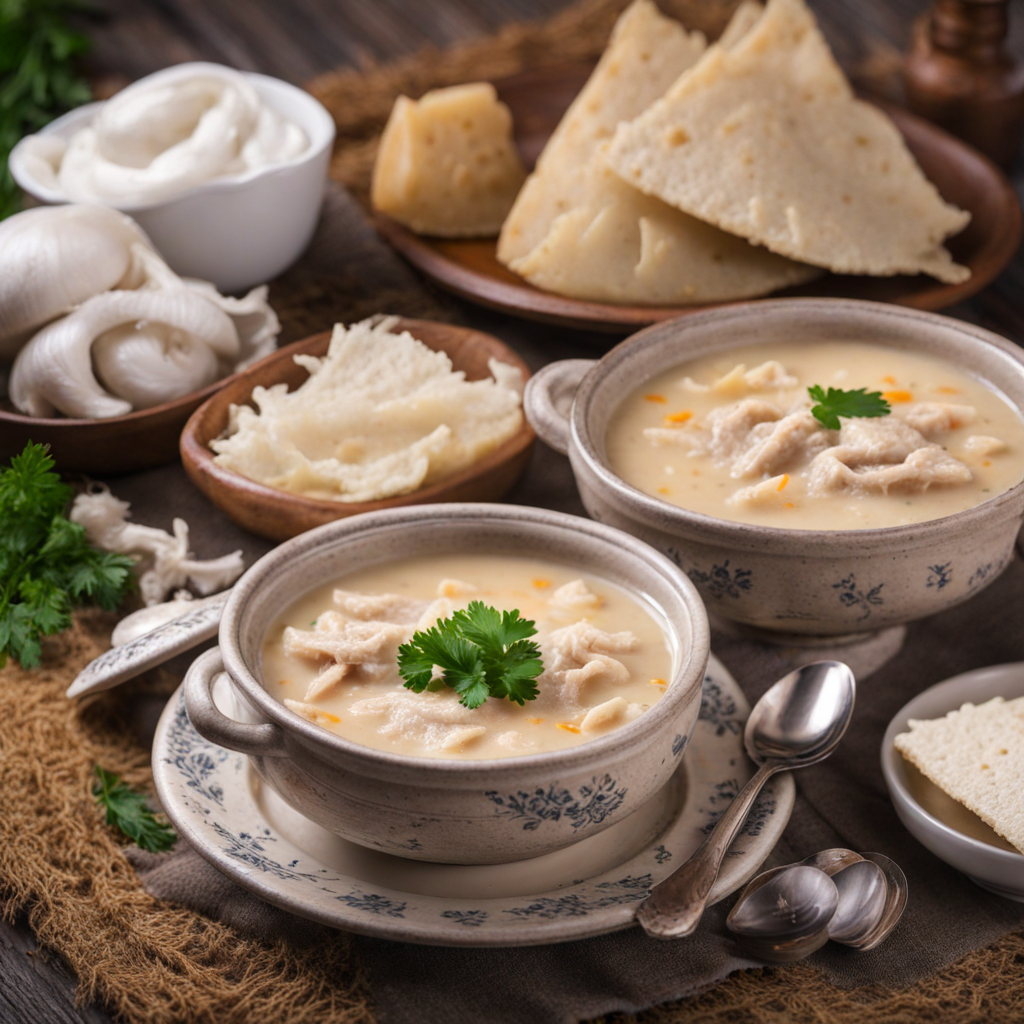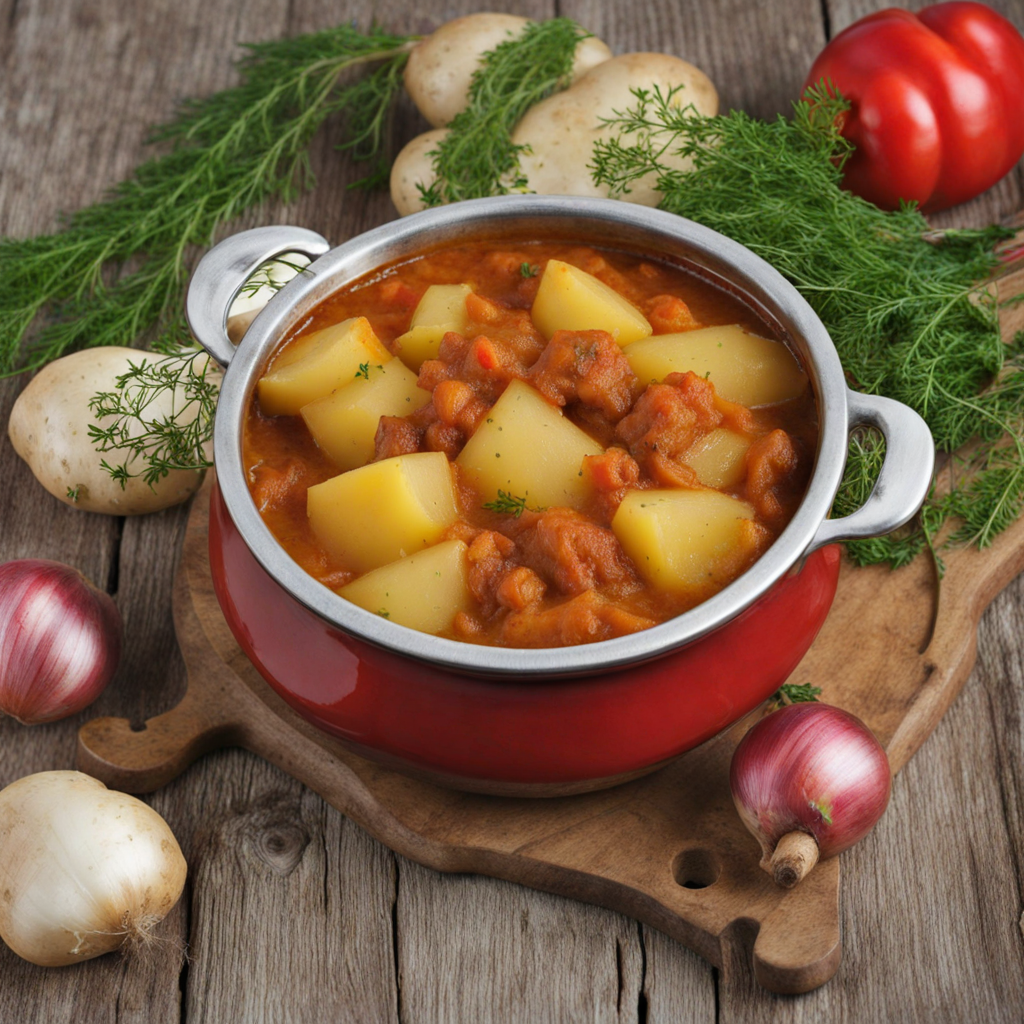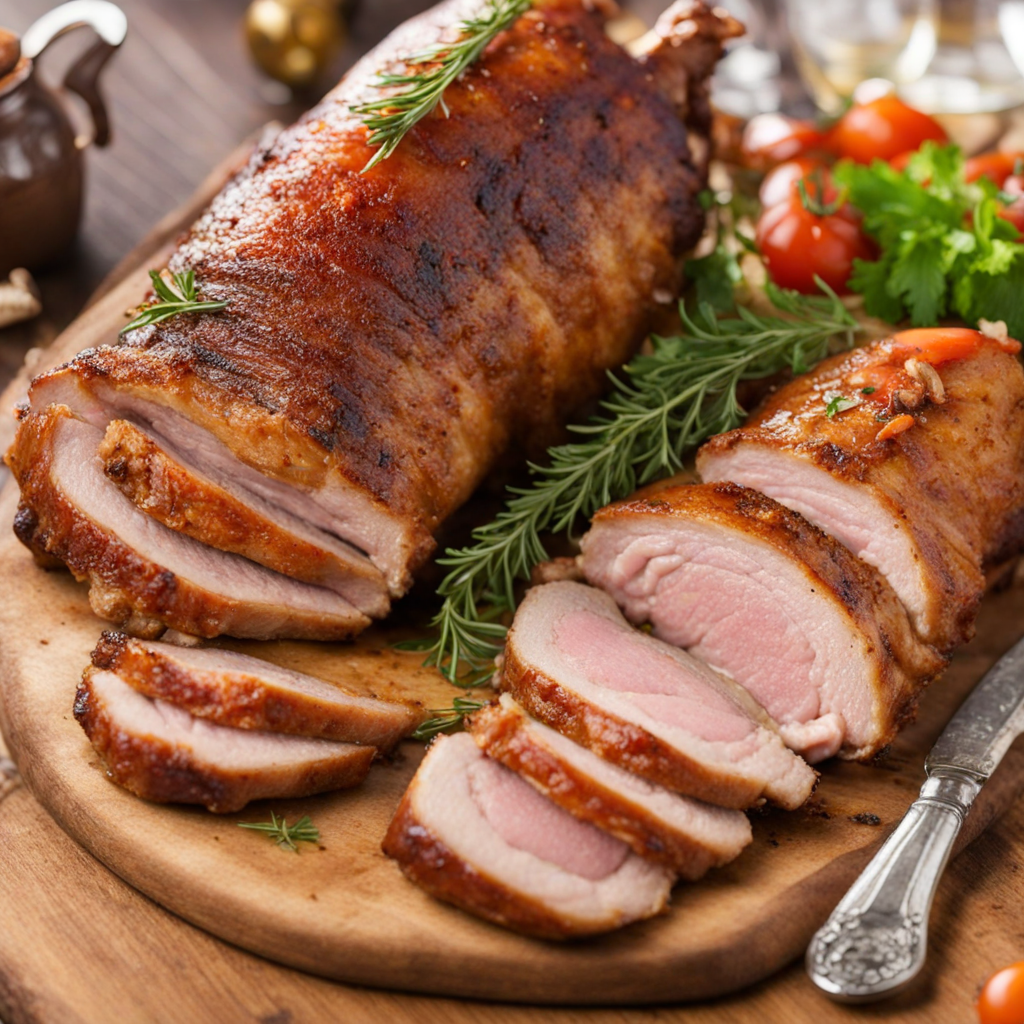Tripe Soup
Tripe Soup, known as "Ciorbă de burtă" in Romania, is a beloved traditional dish that offers a unique and hearty taste experience. This rich and creamy soup is primarily made from beef tripe, which is the edible lining of the cow's stomach. The tripe is slowly simmered until tender, absorbing the flavors of the aromatic broth infused with spices such as bay leaves, black pepper, and sometimes a hint of garlic. The resulting soup has a distinctively rich flavor profile that balances the earthy taste of the tripe with the zesty notes from the added vinegar or lemon juice, which are essential for achieving that signature tanginess. The texture of Tripe Soup is one of its most intriguing aspects. The tripe itself has a unique, slightly chewy consistency that contrasts beautifully with the silky smoothness of the broth. Often, the soup is enriched with a dollop of sour cream and a sprinkle of fresh parsley, elevating its creaminess and adding a fresh herbaceous note. Additionally, some recipes incorporate egg yolks, which lend an extra depth and richness to the soup, making each spoonful a comforting and satisfying experience. Traditionally served hot, Tripe Soup is often enjoyed as a starter or main course during Romanian meals, especially in colder months. It is commonly accompanied by crusty bread and a side of hot chili peppers for those who appreciate a little heat. For many Romanians, this dish not only represents a delightful culinary adventure but also a connection to their cultural heritage, bringing family and friends together around the table to share in its warmth and flavor.
How It Became This Dish
The Rich Tradition of Ciorbă de Burtă: Romania’s Beloved Tripe Soup Origin and Historical Context Ciorbă de burtă, a traditional Romanian dish, is a hearty tripe soup that has captured the hearts and palates of many, both in Romania and beyond. Its roots can be traced back to the Ottoman Empire, which had a significant influence on Romanian cuisine, particularly in the 18th and 19th centuries. The Ottomans brought with them a variety of culinary traditions that incorporated diverse ingredients and cooking methods, which blended into the local culture. The word 'ciorbă' itself comes from the Turkish word 'çorba', referring to a soup, while 'burtă' translates to 'belly' or 'tripe'. The dish primarily uses beef tripe, the edible lining of the stomach, along with a medley of vegetables, spices, and sour cream, resulting in a rich, tangy flavor profile. This combination of ingredients reflects the resourcefulness of rural communities, who utilized every part of the animal in their cooking, thereby minimizing waste and maximizing nourishment. Cultural Significance Ciorbă de burtă holds a special place in Romanian culture, often associated with comfort and celebration. It is considered a quintessential dish for festive occasions, family gatherings, and even as a remedy for hangovers, showcasing its versatility and importance in social contexts. In Romania, food is more than just sustenance; it is a way of bringing people together. Ciorbă de burtă often features prominently in holiday feasts, particularly during Christmas and New Year's celebrations. It is also a staple at weddings and christenings, where it symbolizes abundance and hospitality. The act of sharing a bowl of ciorbă de burtă fosters a sense of community, as friends and family gather to enjoy this beloved dish together. Moreover, the soup has become a symbol of national pride, with regional variations and personal recipes passed down through generations. Each family may have its own twist on the classic recipe, incorporating local ingredients or unique techniques. This adaptability has allowed ciorbă de burtă to maintain its relevance in modern Romanian cuisine, even as culinary trends evolve. Development Over Time Throughout its history, ciorbă de burtă has undergone various transformations. In the early 20th century, as Romania began to modernize and urbanize, traditional recipes were often adapted to fit the changing lifestyles of the populace. The rise of industrialization and the establishment of urban markets made ingredients more accessible, leading to an increase in the popularity of the dish. Urban dwellers began to seek out authentic flavors reminiscent of their rural roots, and ciorbă de burtă became a comforting reminder of home for many. During the communist era in Romania (1947-1989), the availability of ingredients fluctuated due to economic restrictions. However, ciorbă de burtă remained a staple in many households, as it was seen as an economical meal that could feed a family. It was also commonly served in state-run restaurants and taverns, contributing to its status as a national dish. The recipe, while sometimes simplified due to ingredient shortages, retained its core elements and flavors. In recent years, there has been a resurgence of interest in traditional Romanian cuisine, driven by a desire to preserve cultural heritage and celebrate local ingredients. Chefs and home cooks alike have revisited classic recipes, including ciorbă de burtă, often with a contemporary twist. Some modern variations incorporate additional spices, herbs, or even alternative proteins, while still honoring the essence of the original dish. Furthermore, the rise of culinary tourism has played a significant role in popularizing ciorbă de burtă outside of Romania. Travelers seeking authentic culinary experiences are drawn to Romania's rich food culture, and ciorbă de burtă often tops the list of must-try dishes. Restaurants across Romania now proudly serve this iconic soup, showcasing its history and cultural significance to both locals and visitors alike. Ingredients and Preparation The preparation of ciorbă de burtă is both an art and a science, requiring patience and skill. The key ingredient, beef tripe, is carefully cleaned and simmered for several hours until tender. This process not only enhances the flavor but also infuses the broth with a creamy texture. Traditional recipes typically call for a combination of carrots, onions, and celery, which are sautéed and then added to the simmering tripe. Alongside these vegetables, a blend of spices including black peppercorns, bay leaves, and sometimes garlic, contributes to the soup's aromatic profile. The soup is then finished with a generous amount of vinegar or lemon juice to achieve the characteristic sourness that defines ciorbă de burtă. To serve, the soup is ladled into bowls and topped with a dollop of sour cream, which adds richness and balances the acidity. A sprinkle of freshly chopped parsley or dill is often added for a burst of color and flavor. Many Romanians enjoy their ciorbă de burtă with a side of homemade bread, allowing the hearty broth to be soaked up and savored. Conclusion Ciorbă de burtă is more than just a dish; it is a reflection of Romania's history, culture, and culinary evolution. From its Ottoman influences to its status as a beloved comfort food, the soup embodies the essence of Romanian hospitality and tradition. As it continues to evolve and adapt to modern tastes, ciorbă de burtă remains a cherished symbol of national identity, connecting generations through shared meals and memories. Whether enjoyed at a festive gathering or on a chilly winter's day, ciorbă de burtă stands as a testament to the richness of Romanian culinary heritage.
You may like
Discover local flavors from Romania







